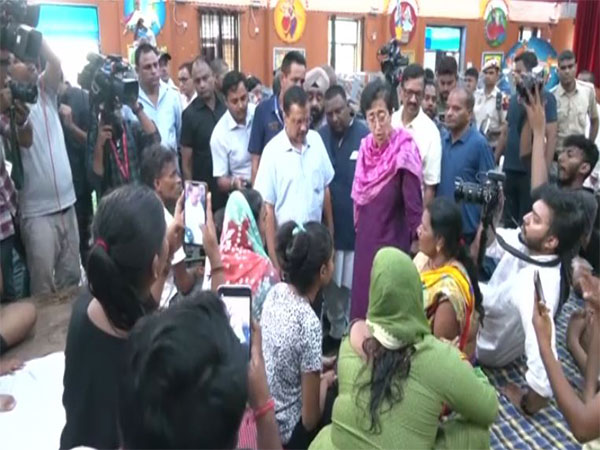Chief Minister Arvind Kejriwal on Sunday visited a flood relief camp in Sarvodaya Bal Vidyalaya at Mori Gate in north Delhi.
During his visit to the relief camp where residents from the flooded Yamuna Bazar area have taken shelter, the CM was accompanied by Delhi Public Works Department (PWD) Minister Atishi.
“Due to the rise in the water level of Yamuna River, many low-lying areas were affected and have been facing waterlogging for the past few days. So residents of affected areas were moved to various relief camps across the capital. Six districts in the city have been affected and Delhi government has set up relief camps at several places in these six districts. Relief camps were set up in nearby schools and Dharamshalas and facilities for drinking water and toilets were ensured. This is one such relief camp, we have residents from the Yamuna Bazar area here”, CM Kejriwal told reporters after visiting the camp.
Meanwhile, Delhi Lieutenant Governor (LG) Vinai Kumar Saxena also inspected flood-affected areas in Delhi’s Raj Ghat area today.
Delhi Minister Saurabh Bharadwaj earlier today inspected a relief camp near Mayur Vihar.
On Saturday, Delhi PWD Minister Atishi directed the chief secretary to ensure that all amenities are provided to people sheltered in relief camps.
Marooned locals residing on the banks of the Yamuna were evacuated and shifted to relief camps after the river breached the danger mark, resulting in water spilling over and flooding several parts of the national capital.
There have been complaints of inadequate facilities at the relief camps, with people sheltered there claiming shortage of water, inadequate toilets, electricity and poor quality of food.
Meanwhile, according to the data shared by the Central Water Commission on their portal, the water level of the Yamuna River dropped to 205.88 metres at 12 noon on Sunday.
Further, according to officials, the water level of Yamuna is likely to fall below the danger mark in the next few hours. The Yamuna River in Delhi crossed the danger mark of 205.33 metres at 5 pm on July 10.
Officials said that National Disaster Response Force (NDRF) teams carried out rescue operations in the low-lying areas near Pragati Maidan late on Saturday night as the Yamuna River continues to overflow.
Notably, several parts of Delhi witnessed waterlogging and flooding following incessant rainfall and the release of water from the Hathni Kund barrage in Haryana. However, the water level of the Yamuna river is receding gradually as per the data released by the Central Water Commission. It was recorded at 205.95 at 10 am today. (ANI)
Read More: http://13.232.95.176/

